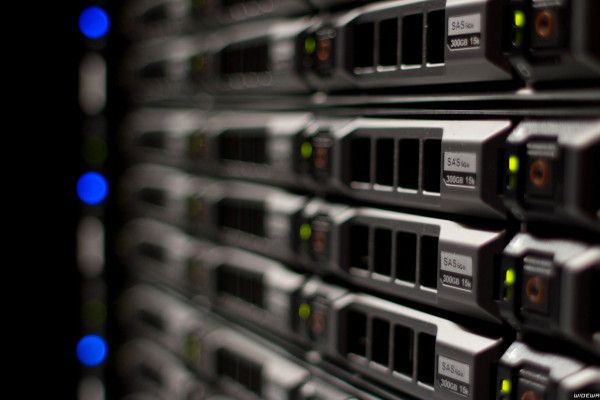Dell Technologies continues to grow and expand its business in various directions to stay ahead of the competition, while still investing in R&D to stay at the forefront of technology.
The company’s latest venture is in the area of high performance computing – or HPC for short. HPC allows businesses to harness the power of supercomputers to accomplish incredible feats in terms of performance. To give you an idea of what kind of performance levels to expect from an HPC system, the fastest supercomputer in the world – the IBM Summit – can process over 200 quadrillion operations per second!
HPC also makes it possible for businesses to tackle the most complex computational problems and scenarios that would normally go undecoded due to the time required for even a single computer to compute the result.
Why this should be of interest to businesses
Dell’s investments in R&D and acquisitions can be credited with creating some of the most popular business models in use today. One such example is the company’s creation of the x86 server hardware platform which led to the dominance of the PC in the early 1990s, and the advent of cloud computing which provided businesses with a platform they can use to reach unlimited audiences worldwide.
While it’s not entirely clear if Dell is seeking to directly compete with traditional server hardware companies like HP and IBM, who have been in the server business for many years, their investment in HPC is certainly geared toward creating a new market segment for their servers, and one that they can dominate.
Dell’s HPC Journey
Let’s examine Dell’s journey into the HPC sector and the steps they’ve taken to get here.
The company started to investigate the HPC sector back in 2016, when they acquired the rights to utilize the Intel Xeon Processor for HPC. Later that year, they began working with computer hardware manufacturers and server system integrators to create products that would make the most of this newly acquired technology. At first, Dell positioned themselves as the low-cost provider of HPC solutions by bundling the compute power of an Intel Xeon Processor along with NVIDIA Tesla K80 GPUs into one attractive package. This was followed in early 2018 by the introduction of the Dell Precision T7600 workstation which featured a dual-Turbo Intel Xeon Processor along with 32GB of ECC RAM and a discrete NVIDIA Quadro P5000 GPU – certainly a powerful and attractive machine for users who need to accomplish a lot in a short amount of time. For even faster performance, the T7600 was recently upgraded to feature a quad-Turbo Intel Xeon Processor and 128GB of ECC RAM and a dual-chip Quadro P5000 GPU – a perfect medium-to-large business workstation!
Other prominent products from Dell in the HPC space include the Intel Cascade Lake Server, which the company announced late last year to be followed by the high-end Dell E6420 Workstation, featuring a 20-core Intel Core i9-9900 processor with NVIDIA Quadro P400 GPUs.
These products, combined with the company’s continued investment in R&D, serve as compelling evidence that Dell is more than capable of entering the HPC market, and doing so with a firm hand.
Why The Precision T7600 Workstation Is A Premier Choice In HPC
There’s a reason why the Dell Precision T7600 workstation is such a popular choice among high-performance computing users – it’s a perfect balance of price, performance, and feature-set. These are the aspects that typically win out in the server space, and where HP, IBM, and other brands have traditionally excelled. Let’s examine each of these points in turn.
First off, the Precision T7600 comes at an attractive price point, especially since it’s a workstation and not designed for servers. The entry-level model with Intel Xeon Processor and Quadro P4000 GPU costs just $7,700 – a fraction of what competitors charge and significantly less than what you’d typically spend on a traditional HPC server or workstation. From a pure CPU performance standpoint, it’s a great value!
Second, the device provides an excellent balance of feature-set and performance. Yes, you get a basic X86-based working environment with Windows and Linux operating systems (although the latter is not officially supported), but you also get a number of high-end hardware components including a dual-Turbo Intel Xeon E5-2600 Processor, 128GB of ECC RAM, and a trio of NVIDIA Quadro P4000 GPUs – with prices like these, who needs Windows anyways! From a pure performance standpoint, you can’t go wrong with this package – the CPU alone is capable of handling complex calculations and rendering tasks, while the GPU’s provide a powerful parallel computing platform for crunching large amounts of data.
Third, the device boasts a number of useful and attractive features which make it an all-around perfect HPC solution. First off, the dual-Turbo Intel Xeon E5-2600 v4 processors provide ample CPU power along with great overclocking potential, enabling you to run multiple VMs simultaneously. Second, the device supports up to 12TB of DRAM configured in a RAID array for all of your computational needs. Third, the inclusion of an mSATA SSD for storage makes this device an excellent candidate for mass storage, especially if you opt for the 256GB version which comes with a 2.5-inch SATA III connector! Fourth, the device supports a number of useful interfaces including two Ethernet jacks, one USB Type-C port, and one serial port – a full-featured and versatile setup in a tiny package!
When it comes to building a strong business, delivering on quality and value for your customers and stakeholders is essential. At the same time, you want to keep your costs low while driving revenue – it’s a balancing act but one that every business must consider; especially in these days of intense competition.
